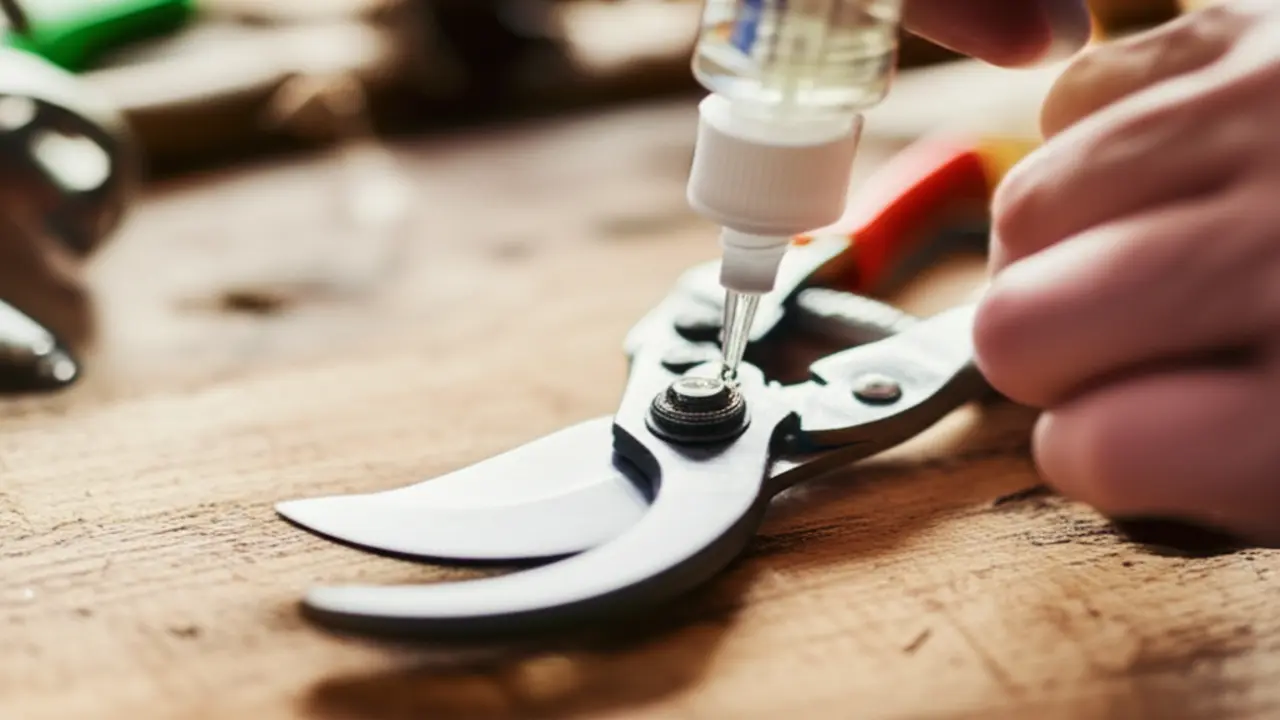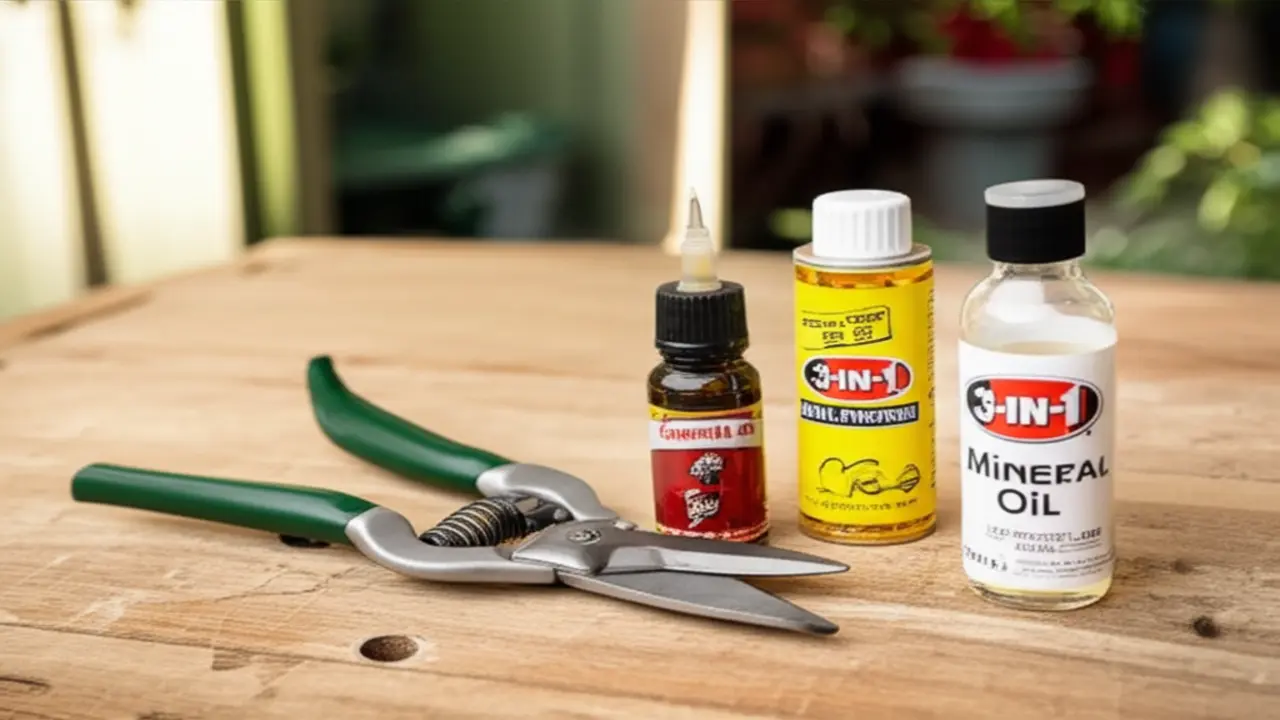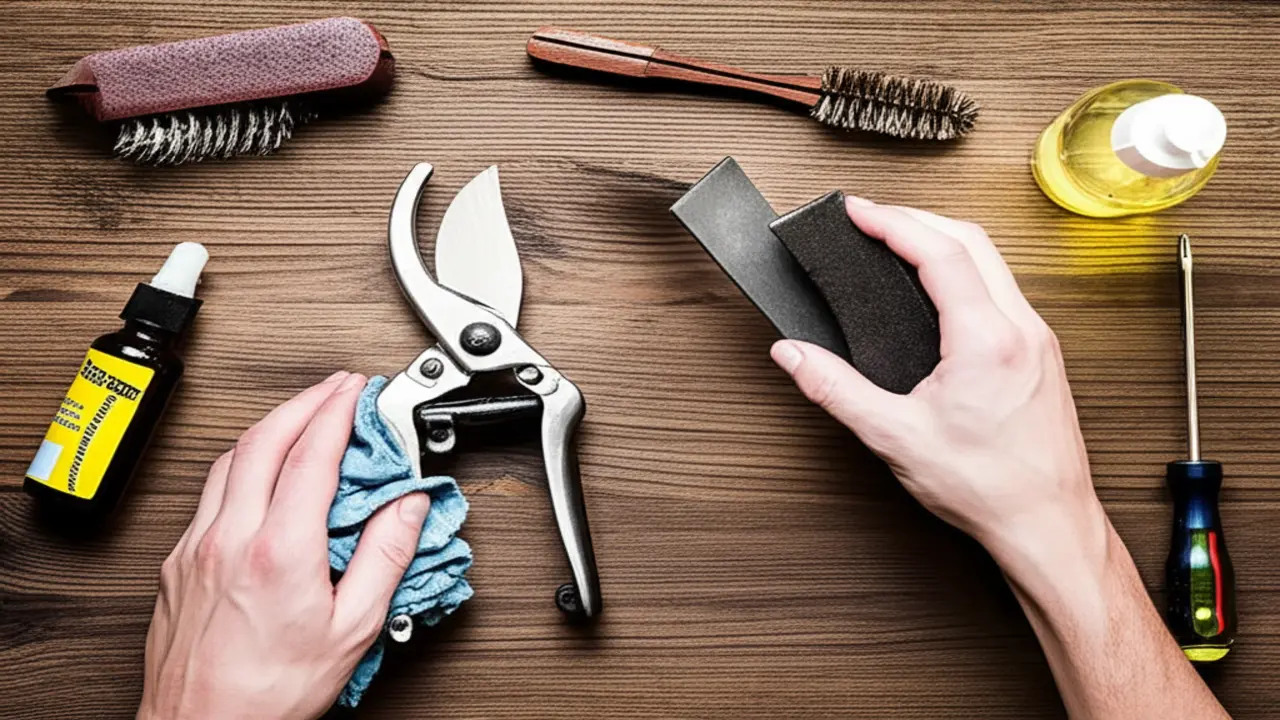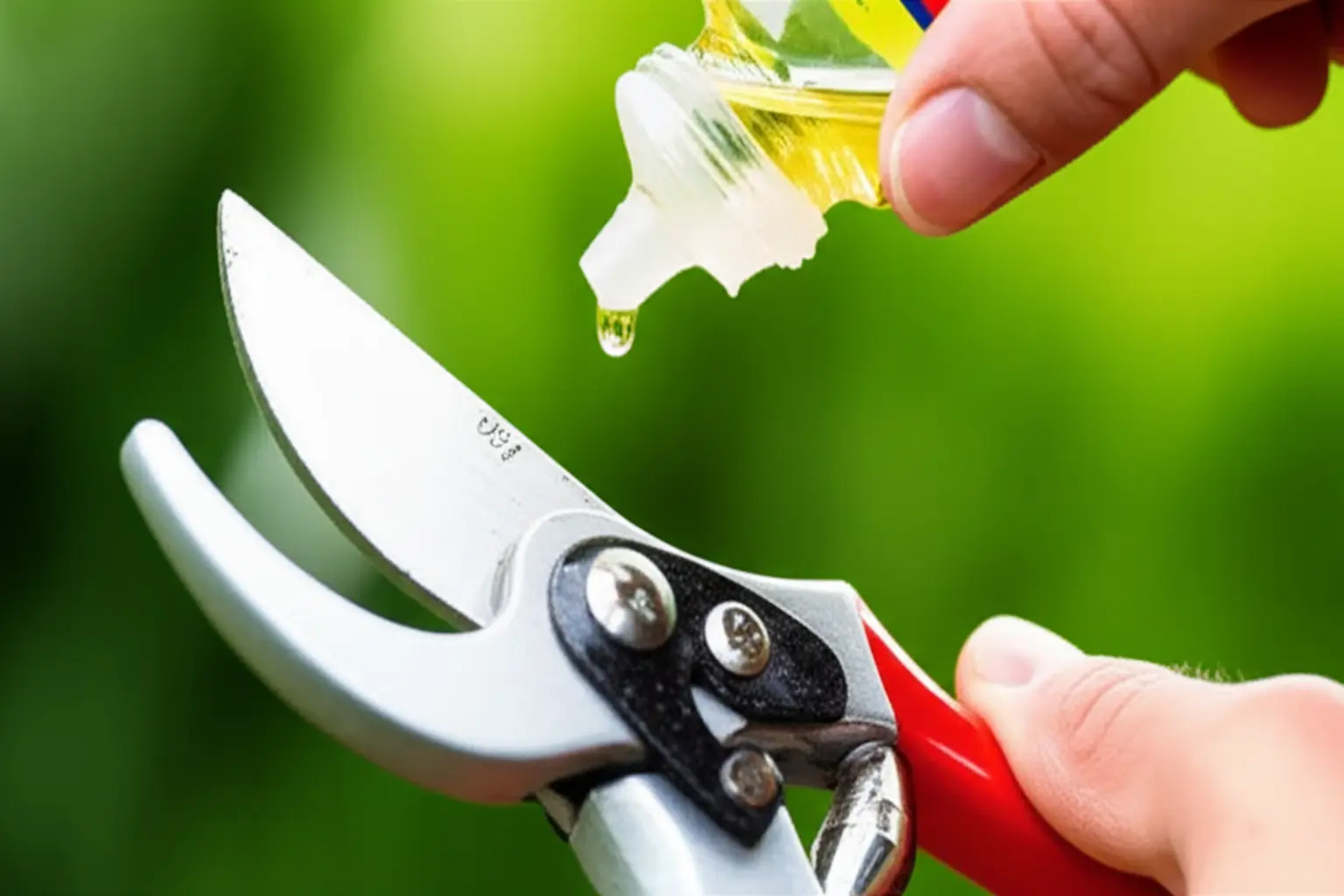
1. The Importance of Oiling Pruning Shears

2. Selecting the Right Oil for Pruning Shears
For those seeking maximum protection, specialized garden tool lubricants are a better option. These products are often formulated with additives like PTFE that create a more durable barrier against moisture and sap buildup. While they are more effective than general-purpose oils for preventing corrosion on premium tools, their higher price point may not be necessary for the average home gardener. Consistent pruning shears cleaning and the regular use of a basic oil will keep most shears functioning perfectly.

3. Step-by-Step Guide: How to Oil Pruning Shears
* 1. Clean and Dry the Shears: Before you think about applying `pruning shears oil`, the tool must be completely clean. For detailed instructions, our guide on pruning shears cleaning covers how to effectively remove sap and residue. Once clean, use a soft cloth to dry the shears thoroughly, paying close attention to the pivot point and any crevices where water might hide.
* 2. Apply the Oil: Open the shears and apply a few drops of a quality lubricant, like camellia oil or 3-in-1 oil, directly onto the pivot joint. Open and close the blades several times. This action works the oil deep into the moving parts, ensuring a smooth, friction-free mechanism.
* 3. Wipe and Store: Lightly coat the blades with a thin film of oil to protect the metal. Finally, take a clean, dry rag and wipe off all excess oil. This is a critical step because too much oil can attract dirt and debris, leading to gumming. Store your oiled shears in a dry place, ready for the next use.

4. Comprehensive Pruning Shear Maintenance Beyond Oiling
5. Frequently Asked Questions (FAQ) About Pruning Shears Oil
* Can I use household oils on my pruning shears?
It is not recommended. Common kitchen oils like vegetable or olive oil can turn rancid over time, creating a sticky residue that gums up the pivot and attracts more dirt. Stick to mineral oil based lubricants or specialized oils like Camellia oil for the best results and longevity.
* How often should I oil my shears?
For optimal performance, oil your pruning shears lightly after each major use, especially if they have been exposed to moisture or plant sap. A thorough pruning shears cleaning followed by oiling at the end of the gardening season is also crucial to prevent rust during storage.
* Is WD-40 a good choice for lubrication?
No, WD-40 is not a true lubricant. It is a water displacer and solvent. While it can help with cleaning and freeing up a stuck tool, it evaporates quickly and does not provide lasting lubrication or rust protection. Always follow up with a proper lubricating oil.
* What if I prune edible plants? Are there food-safe oils?
Yes. If you are pruning fruit trees, berry bushes, or herbs, using a food-safe oil is essential. Look for pure mineral oil (often sold as cutting board oil), or plant-based options like Camellia oil or even coconut oil, which are non-toxic and will not contaminate your harvest.

